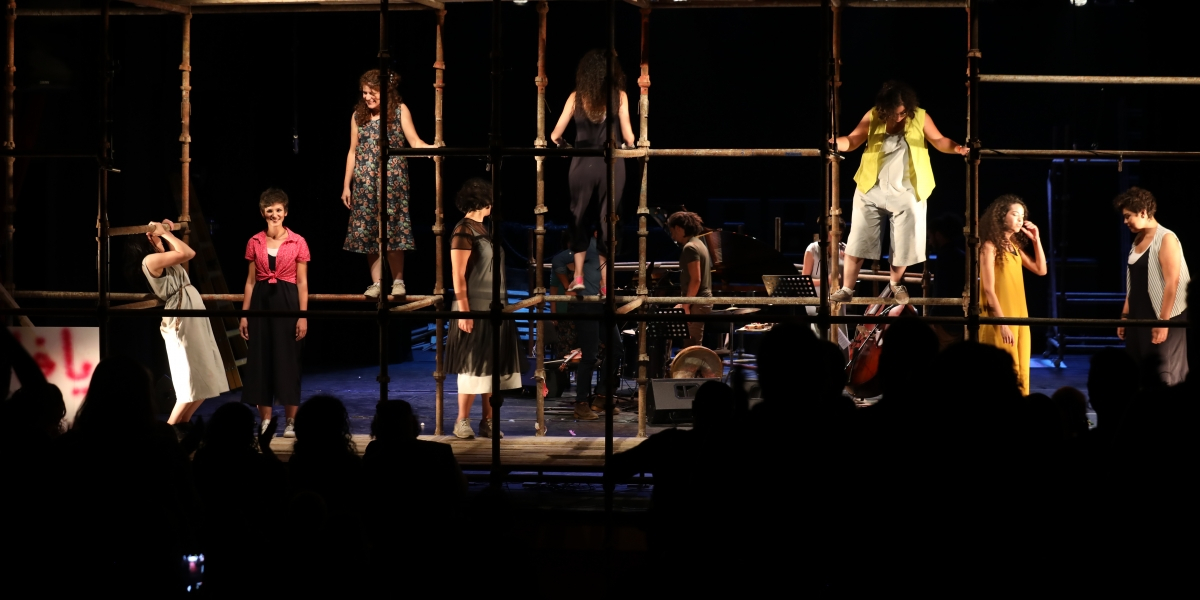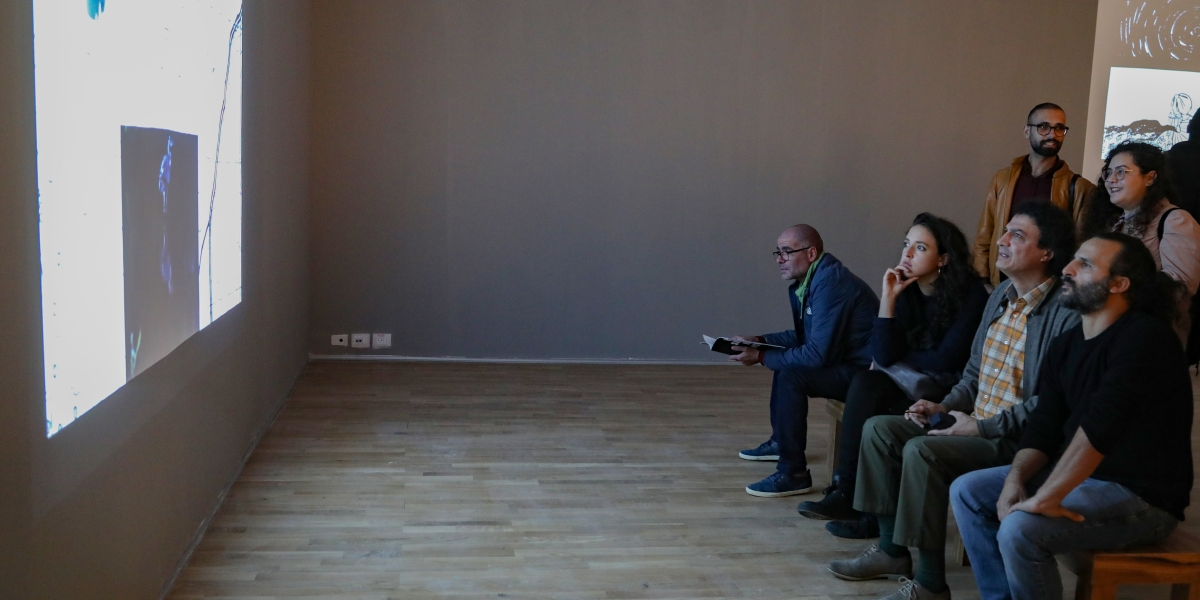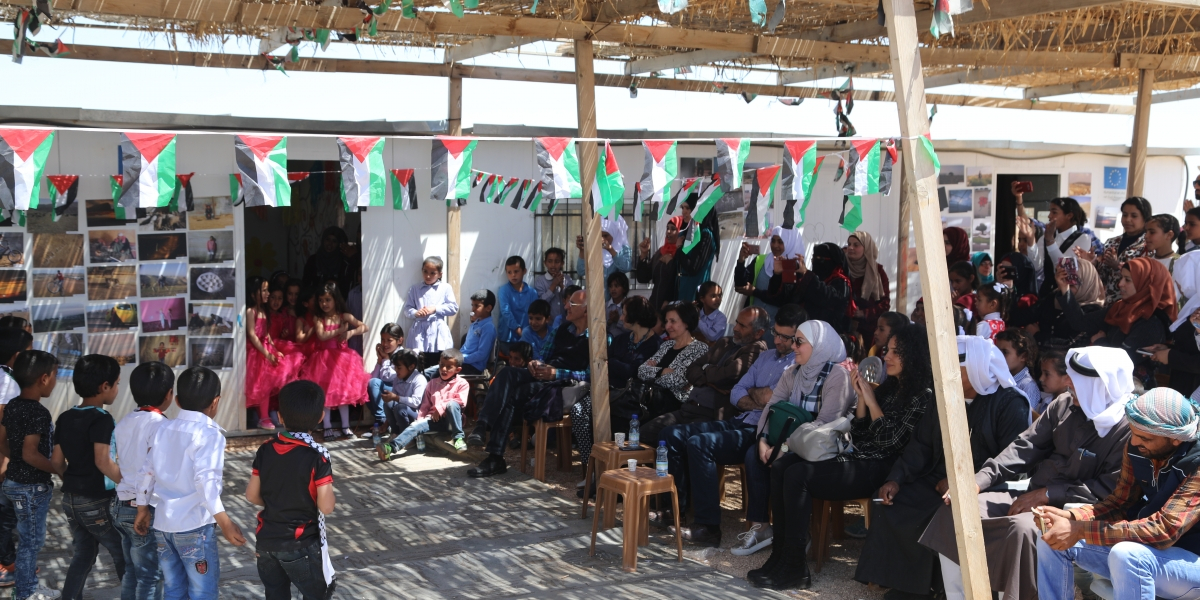Culture and Arts Programme (CAP)
- Introduction
- Production, study and performance grants that help artists engage with communities
- Building a broader and more diverse audience for culture
- Developing the field of visual arts to make it more dynamic and sustainable
- Local communities are more involved in defining their problems and seeking to solve them through artistic and cultural interventions

The reporting period witnessed the continuation of the project “Visual Arts: A Flourishing Field,” and a beginning of the project “Culture, Arts and Community Engagement” by offering grants to work in new areas. The programme also continued to provide new grants through the “Selat: Links through the Arts” project and to support different cultural and artistic events and productions. It also continued to organise its interventions and to provide grants and awards in various fields of work.
CAP supported 16 new art projects in the performing, visual and audio-visual arts. These projects were chosen from dozens of others that applied by specialised jury committees, based on criteria focusing on quality and professionalism within the framework of the Performing Arts Grants and the “Selat: Links Through the Arts” project. The programme continued to follow up on nine projects that were in progress from previous rounds and provided support to complete many of them. These projects engaged 200 artists in new cultural and artistic productions and shows and enabled a large portion of them to earn income from their work.
A number of these projects also enabled 235 young artists to participate in training and capacity-building programmes, which allowed them to develop their skills and knowledge and helped them to build a career path.

In addition, the programme provided 16 new scholarships for students in the fields of music—offering 11 in the music field—performing arts and cultural management, 3 scholarships for theatre and dance students and two scholarships in the field of cultural management. Meanwhile, four students finished their studies this year at the bachelor’s or masters level with the support of the programme.
As part of the programme's work in developing and implementing capacity-building programmes and interventions, three artists participated in artistic residency grants and 10 writers participated in the writing workshop for theatre, while 42 artists applied to participate in the Young Artist of the Year Award (YAYA) in 2018; 10 of them were able to work on their projects for a whole year.

As for building a broader and more diverse audience for Palestinian culture locally and internationally through programmes supported by the Foundation, the programme has continued to support a number of prominent art festivals that enjoy a high artistic quality and wide audiences. The programme supported 13 international and local festivals in various artistic fields, including contemporary dance, music, theatre, cinema and folklore. They presented 166 film screenings and 143 performances, with the participation of 320 artists, academics and local and international groups. These events extended to many Palestinian cities and towns and reached 58,715 interested persons from various social and age groups.
Through its seasonal grants, the programme supported 23 activities and artistic projects in the fields of literature, the visual arts and performing arts, through which 81 performances were presented, attended by 18,476 people. Also, 21,479 people watched 89 performances of new productions through grants provided by the programme during the reporting period. With this, the total number of events organised with the support of the programme, or in cooperation with it, reached 479 events, seen by an audience of over 98,000 people in various areas within Palestine, including Nablus, Ramallah, Jerusalem, Bethlehem, Beit Sahour, Jericho, the Gaza Strip, Haifa, Kafr Rumman, Khirbet Zakaria, Beit Iksa, Baaneh, Al-Fredis, Masada, Aida Refugee Camp, Al-Dheeshah Refugee Camp, Tira, and outside Palestine including Paris, Manchester, Leeds, Edinburgh, London, Birmingham, Athens, Kassel, Estonia, Ankara, Bursa, Beirut and Oslo.
The programme also supported nine participations of Palestinian individuals and/or groups in international cultural and artistic events, which also contributes to building a broader audience for Palestinian culture abroad.
Within the framework of supporting the publication and promotion of new experiences and works, six books (three poetry collections, two short story collections and one novel) were published out of nine books recommended by the Young Writer of the Year Award jury. Four launch events were organised for four of the books in Gaza and Ramallah, with 815 people attending.

Regarding the development of the field of visual arts in Palestine and making it more dynamic and sustainable, the launch of the project “Visual Arts: A Flourishing Field” came to add a primary goal for the programme’s work: to make the visual art scene more dynamic and sustainable. All eight grant agreements were signed, worth SEK 14,327,161 or $1,634,026, with eight institutions working in the field of visual arts in Palestine implementing large and diverse projects over a period of 18 months.
In terms of the administrative accomplishments of the institutions that received the grants: five institutions completed their strategic planning during the period of this report; 16 new employees were hired, including five artists; four institutions undertook infrastructure preparation work; five institutions developed plans to develop resources; and six capacity building consultants were hired. As for the projects’ implementations: 11 arts projects were produced, including organising exhibitions or visits to artists’ studios during the production process; and 28 art trainings were implemented, in which 552 artists participated. The audience count who interacted with the artistic programmes reached about 5,000 people. The employees of the partner institutions participated in 11 training events.

In this context, the programme worked alongside the educational research and development programme to implement the third session of the "Culture, Arts and Social Engagement” project with co-funding from the Swiss Agency for Development. The programme presented four new grants for four different projects, after engaging in a long process with the beneficiaries to develop their projects in separate locations: Al-Jiftlik area by the Ishtar Theater (Ramallah), Deir al-Ghusun area by Dar Qandeel for Culture and Arts (Tulkarm), Abasan and Beit Lahia areas by Hakawi Society for Culture and Arts (Gaza) and in Abu Al-Nawwar Bedouin community (Jerusalem) by the artist Raouf Al Haj Yahya. Nineteen workshops and dialogue meetings were organized within these projects, in which hundreds of people participated, including parents, teachers, students and decision makers. Also, 38 different events and performances were attended by 3,491 people.